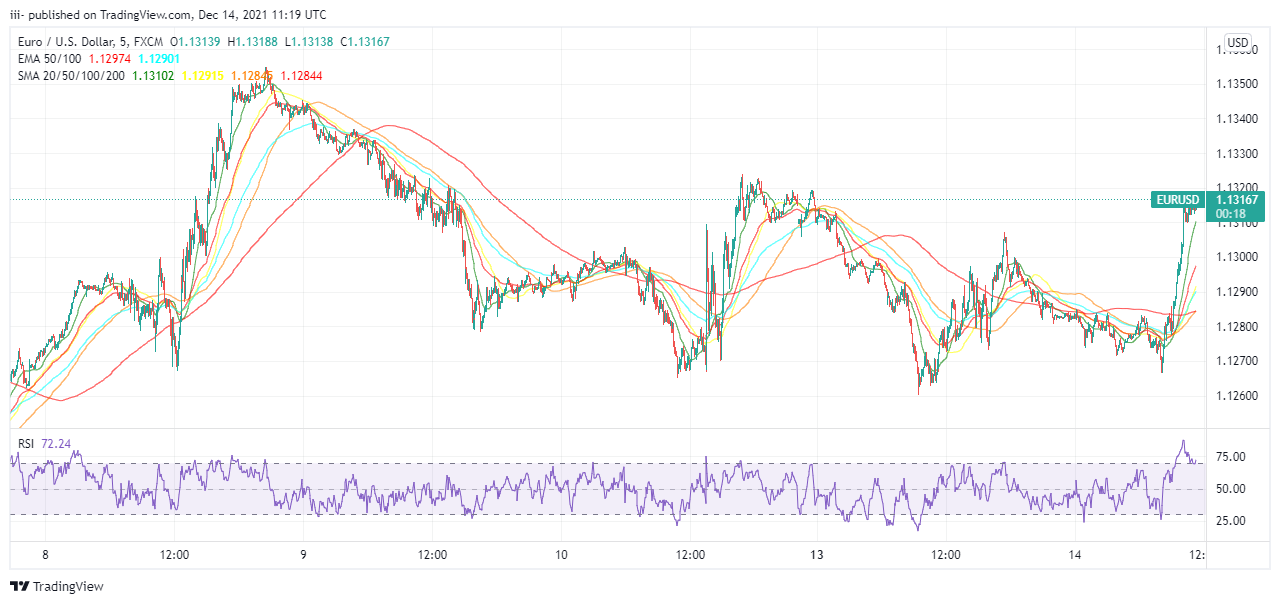
The EUR/USD picked up steam on the European trading day and rose beyond the 1.1300 mark. The resurgence of selling pressure around the Dollar appears to be aiding the pair’s upward movement.
According to figures released on Monday by the European Commission, industrial production in the Euro area increased by 3.3% every year in October.
Outline Of The Technical Details
EUR/USD CHART Source: Tradingview.com
On the four-hour chart, the EUR/USD is testing the 100-period simple moving average (SMA) at 1.1280. Although the pair may continue to hold above that barrier, the declining trend line appears to have generated significant resistance near 1.1300.
The 20-period and 50-period simple moving averages (SMAs) also confirm that area. It seems unlikely that the pair will mount a convincing comeback unless buyers can convert that level into support first.
On the downside, the level of 1.1270 serves as critical support. If a four-hour candle closes below that level, the price may continue to fall toward the next static support at 1.1240.
During this time, the Relative Strength Index (RSI) signal remains below 50, confirming the belief that buyers are having a difficult time gaining control of the EUR/USD’s movement.
An Overview Of The Fundamentals
After a choppy start to the European session, the EUR/USD pair found support in the 1.1275-70 area, only a few basis points above the overnight swing low of 1.1257.
With expectations that the Federal Reserve will tighten the fiscal system sooner rather than later to control stubbornly high inflation, the US Dollar held steady near a one-week high.
New concerns about the economic threats arising from the spread of the Omicron strain of the coronavirus, in addition to the factors mentioned earlier, contributed to the Greenback’s safe-haven reputation even more.
A more dovish tone taken by the European Central Bank (ECB), on the other hand, has damaged the common currency and put some downward pressure on the EUR/USD pair of currencies.
In truth, the European Central Bank’s policymakers have downplayed the importance of any action to combat inflation. The EUR/USD pair was hurt by the gap in monetary policy outlooks between the US Federal Reserve and the European Central Bank.
As a result of investors’ preference to remain on the sidelines ahead of crucial central bank event risks, the downside has been cushioned, at least for the time being.
The Federal Reserve will publish its monetary policy decision on Wednesday, while the European Central Bank (ECB) will meet on Thursday. The outcome of this event will dictate the future of the EUR/USD pair’s next leg of a trend reversal.
Trading will be influenced by the release of Eurozone Industrial Production data, which will be accompanied by the release of the US Producer Price Index later in the early North American session, in the meantime.
Additionally, the broader market risk sentiment will impact USD price dynamics and create some market opportunities around the EUR/USD pair, as previously mentioned.













